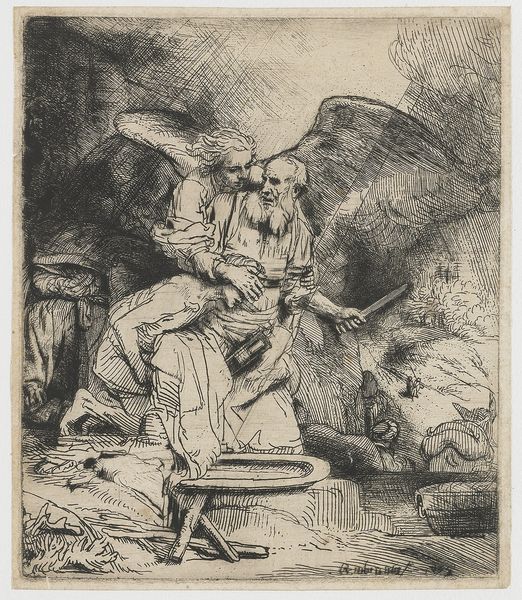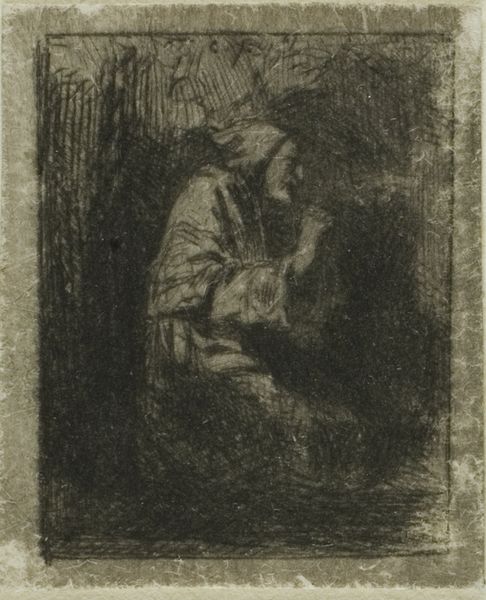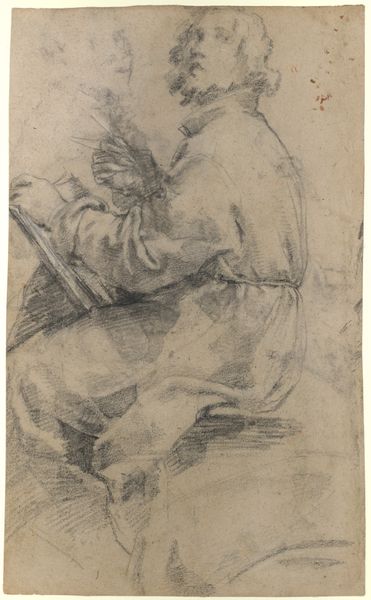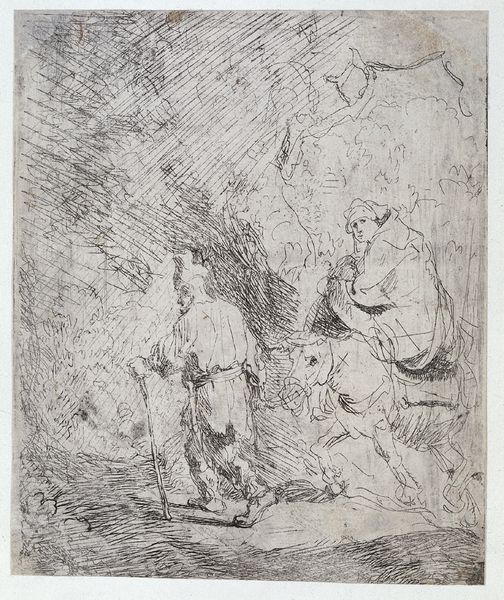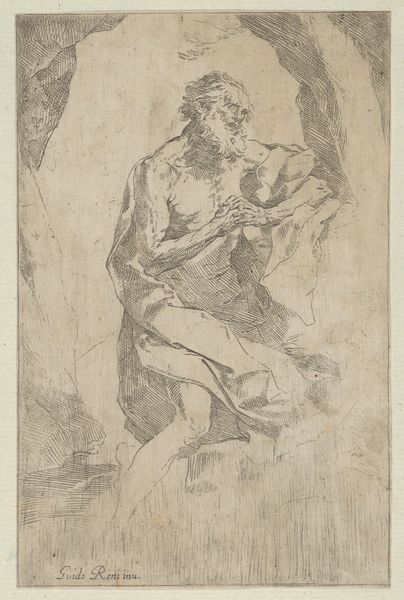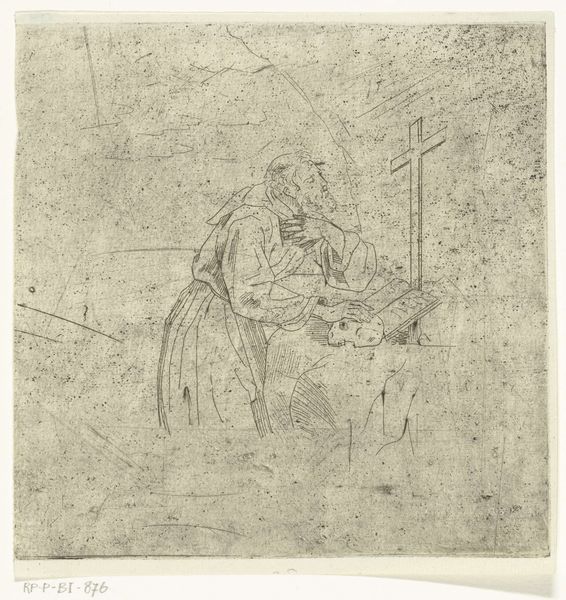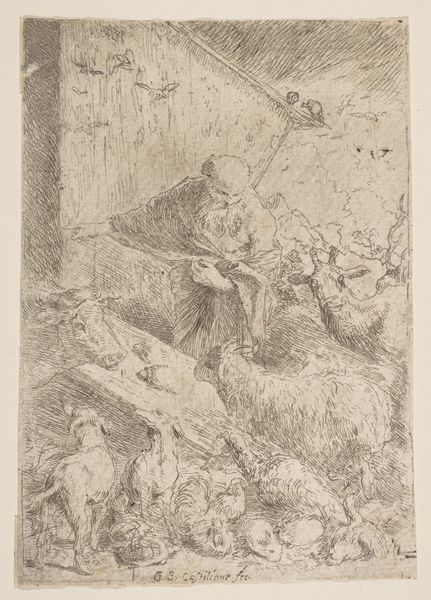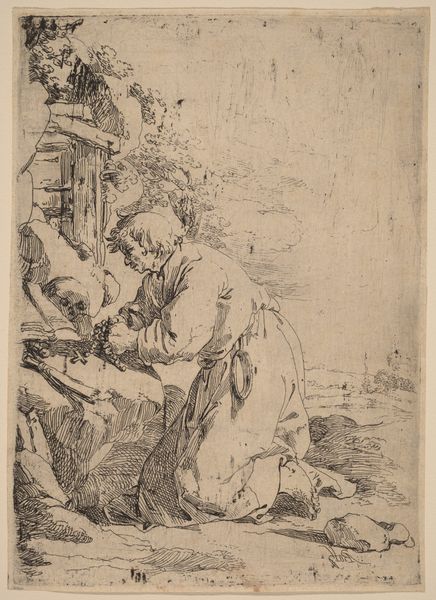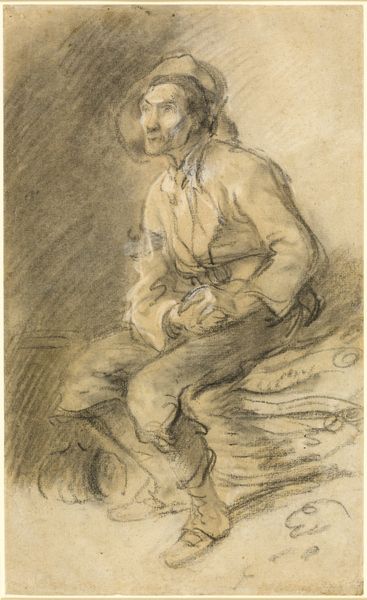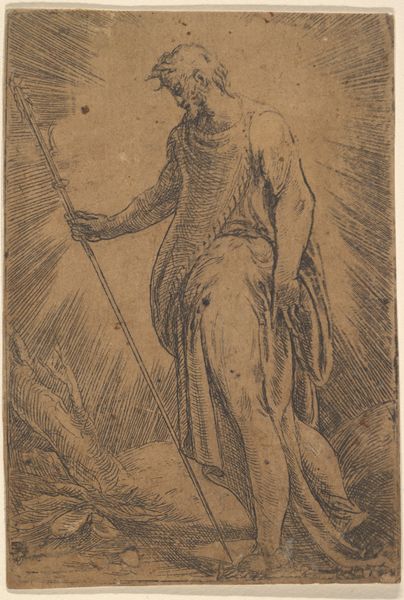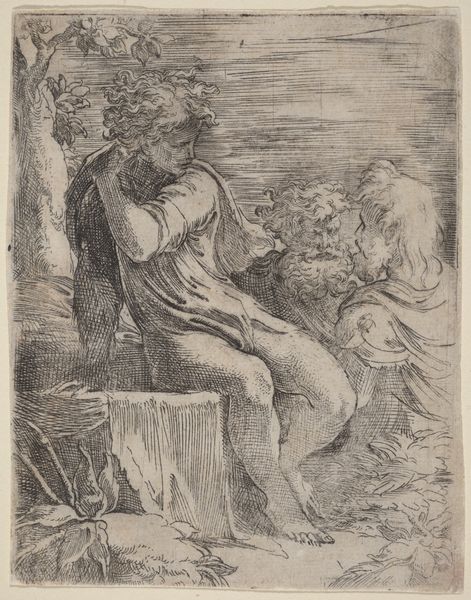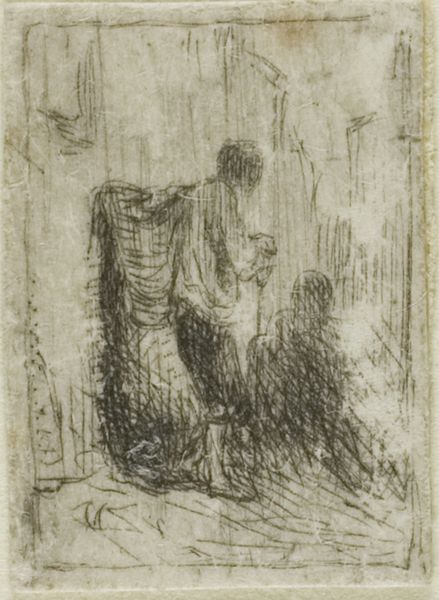
drawing, print, etching, ink
#
portrait
#
drawing
#
narrative-art
# print
#
etching
#
pencil sketch
#
charcoal drawing
#
mannerism
#
figuration
#
11_renaissance
#
ink
#
pencil drawing
#
chiaroscuro
#
history-painting
Copyright: Public domain
Curator: Immediately striking. This image has an eerie quality. Stark lighting casts shadows, enveloping most of the composition. It gives it this sense of urgency and solitude. Editor: You’ve pinpointed its immediate impact. The artwork, dating to about 1630, is Rembrandt van Rijn’s "St. Jerome Kneeling." Crafted through etching, drypoint and burin, it's a piece that draws you into a deeply contemplative moment. Curator: Absolutely, it’s a quintessential representation of St. Jerome. We see him in a penitential stance. The skull, so vividly rendered, speaks to vanitas—a reminder of mortality and the ephemeral nature of life. His intellectual struggle is visible. Editor: The history of its reception is intriguing. In the 17th century, depictions of saints were fraught with political implications, especially during the rise of Protestantism, with its skepticism toward certain forms of religious imagery. Curator: Yet the very choice of Jerome – a scholar, a translator of the Bible – provides another layer. His intellectual contributions become the subject of study in themselves. Doesn't the quality of light evoke divine intervention, an unveiling of sacred knowledge? The lines around his head almost feel halo-like, yet are roughly sketched. Editor: I think there is a tension between his spiritual commitment and his life as an academic. I find myself pondering how viewers might have understood this in an era of evolving religious ideologies and increased literacy rates. Consider that, because Rembrandt printed multiple copies of this piece, his art democratized religion somewhat. Curator: Precisely. It places contemplation into the domestic sphere. The image can become a focus of private devotion and philosophical inquiry, bridging the earthly and the spiritual. What would people make of that? Editor: It invites reflection. The print serves as a lens through which individuals can consider their relationship to faith and knowledge within the socio-political landscape. The question is: what did Rembrandt really believe? Curator: A perfect question for contemporary viewers to continue considering the complexities of belief, scholarship, and art. Editor: Indeed, making this encounter with "St. Jerome Kneeling" perpetually relevant.
Comments
No comments
Be the first to comment and join the conversation on the ultimate creative platform.

